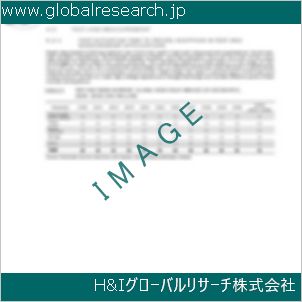1 High Temperature Adhesive Market Overview
1.1 Product Definition
1.2 High Temperature Adhesive Segment by Type
1.2.1 Global High Temperature Adhesive Market Value Growth Rate Analysis by Type 2022 VS 2029
1.2.2 Epoxy High Temperature Adhesives
1.2.3 Silicone High Temperature Adhesives
1.2.4 Polyurethane High Temperature Adhesives
1.2.5 Others
1.3 High Temperature Adhesive Segment by Application
1.3.1 Global High Temperature Adhesive Market Value Growth Rate Analysis by Application: 2022 VS 2029
1.3.2 Electrical & Electronics
1.3.3 Automotive
1.3.4 Construction
1.3.5 Aerospace & Defense
1.3.6 Others
1.4 Global Market Growth Prospects
1.4.1 Global High Temperature Adhesive Production Value Estimates and Forecasts (2018-2029)
1.4.2 Global High Temperature Adhesive Production Capacity Estimates and Forecasts (2018-2029)
1.4.3 Global High Temperature Adhesive Production Estimates and Forecasts (2018-2029)
1.4.4 Global High Temperature Adhesive Market Average Price Estimates and Forecasts (2018-2029)
1.5 Assumptions and Limitations
2 Market Competition by Manufacturers
2.1 Global High Temperature Adhesive Production Market Share by Manufacturers (2018-2023)
2.2 Global High Temperature Adhesive Production Value Market Share by Manufacturers (2018-2023)
2.3 Global Key Players of High Temperature Adhesive, Industry Ranking, 2021 VS 2022 VS 2023
2.4 Global High Temperature Adhesive Market Share by Company Type (Tier 1, Tier 2 and Tier 3)
2.5 Global High Temperature Adhesive Average Price by Manufacturers (2018-2023)
2.6 Global Key Manufacturers of High Temperature Adhesive, Manufacturing Base Distribution and Headquarters
2.7 Global Key Manufacturers of High Temperature Adhesive, Product Offered and Application
2.8 Global Key Manufacturers of High Temperature Adhesive, Date of Enter into This Industry
2.9 High Temperature Adhesive Market Competitive Situation and Trends
2.9.1 High Temperature Adhesive Market Concentration Rate
2.9.2 Global 5 and 10 Largest High Temperature Adhesive Players Market Share by Revenue
2.10 Mergers & Acquisitions, Expansion
3 High Temperature Adhesive Production by Region
3.1 Global High Temperature Adhesive Production Value Estimates and Forecasts by Region: 2018 VS 2022 VS 2029
3.2 Global High Temperature Adhesive Production Value by Region (2018-2029)
3.2.1 Global High Temperature Adhesive Production Value Market Share by Region (2018-2023)
3.2.2 Global Forecasted Production Value of High Temperature Adhesive by Region (2024-2029)
3.3 Global High Temperature Adhesive Production Estimates and Forecasts by Region: 2018 VS 2022 VS 2029
3.4 Global High Temperature Adhesive Production by Region (2018-2029)
3.4.1 Global High Temperature Adhesive Production Market Share by Region (2018-2023)
3.4.2 Global Forecasted Production of High Temperature Adhesive by Region (2024-2029)
3.5 Global High Temperature Adhesive Market Price Analysis by Region (2018-2023)
3.6 Global High Temperature Adhesive Production and Value, Year-over-Year Growth
3.6.1 North America High Temperature Adhesive Production Value Estimates and Forecasts (2018-2029)
3.6.2 Europe High Temperature Adhesive Production Value Estimates and Forecasts (2018-2029)
3.6.3 China High Temperature Adhesive Production Value Estimates and Forecasts (2018-2029)
3.6.4 Japan High Temperature Adhesive Production Value Estimates and Forecasts (2018-2029)
4 High Temperature Adhesive Consumption by Region
4.1 Global High Temperature Adhesive Consumption Estimates and Forecasts by Region: 2018 VS 2022 VS 2029
4.2 Global High Temperature Adhesive Consumption by Region (2018-2029)
4.2.1 Global High Temperature Adhesive Consumption by Region (2018-2023)
4.2.2 Global High Temperature Adhesive Forecasted Consumption by Region (2024-2029)
4.3 North America
4.3.1 North America High Temperature Adhesive Consumption Growth Rate by Country: 2018 VS 2022 VS 2029
4.3.2 North America High Temperature Adhesive Consumption by Country (2018-2029)
4.3.3 United States
4.3.4 Canada
4.4 Europe
4.4.1 Europe High Temperature Adhesive Consumption Growth Rate by Country: 2018 VS 2022 VS 2029
4.4.2 Europe High Temperature Adhesive Consumption by Country (2018-2029)
4.4.3 Germany
4.4.4 France
4.4.5 U.K.
4.4.6 Italy
4.4.7 Russia
4.5 Asia Pacific
4.5.1 Asia Pacific High Temperature Adhesive Consumption Growth Rate by Region: 2018 VS 2022 VS 2029
4.5.2 Asia Pacific High Temperature Adhesive Consumption by Region (2018-2029)
4.5.3 China
4.5.4 Japan
4.5.5 South Korea
4.5.6 China Taiwan
4.5.7 Southeast Asia
4.5.8 India
4.6 Latin America, Middle East & Africa
4.6.1 Latin America, Middle East & Africa High Temperature Adhesive Consumption Growth Rate by Country: 2018 VS 2022 VS 2029
4.6.2 Latin America, Middle East & Africa High Temperature Adhesive Consumption by Country (2018-2029)
4.6.3 Mexico
4.6.4 Brazil
4.6.5 Turkey
5 Segment by Type
5.1 Global High Temperature Adhesive Production by Type (2018-2029)
5.1.1 Global High Temperature Adhesive Production by Type (2018-2023)
5.1.2 Global High Temperature Adhesive Production by Type (2024-2029)
5.1.3 Global High Temperature Adhesive Production Market Share by Type (2018-2029)
5.2 Global High Temperature Adhesive Production Value by Type (2018-2029)
5.2.1 Global High Temperature Adhesive Production Value by Type (2018-2023)
5.2.2 Global High Temperature Adhesive Production Value by Type (2024-2029)
5.2.3 Global High Temperature Adhesive Production Value Market Share by Type (2018-2029)
5.3 Global High Temperature Adhesive Price by Type (2018-2029)
6 Segment by Application
6.1 Global High Temperature Adhesive Production by Application (2018-2029)
6.1.1 Global High Temperature Adhesive Production by Application (2018-2023)
6.1.2 Global High Temperature Adhesive Production by Application (2024-2029)
6.1.3 Global High Temperature Adhesive Production Market Share by Application (2018-2029)
6.2 Global High Temperature Adhesive Production Value by Application (2018-2029)
6.2.1 Global High Temperature Adhesive Production Value by Application (2018-2023)
6.2.2 Global High Temperature Adhesive Production Value by Application (2024-2029)
6.2.3 Global High Temperature Adhesive Production Value Market Share by Application (2018-2029)
6.3 Global High Temperature Adhesive Price by Application (2018-2029)
7 Key Companies Profiled
7.1 3M
7.1.1 3M High Temperature Adhesive Corporation Information
7.1.2 3M High Temperature Adhesive Product Portfolio
7.1.3 3M High Temperature Adhesive Production, Value, Price and Gross Margin (2018-2023)
7.1.4 3M Main Business and Markets Served
7.1.5 3M Recent Developments/Updates
7.2 Dow
7.2.1 Dow High Temperature Adhesive Corporation Information
7.2.2 Dow High Temperature Adhesive Product Portfolio
7.2.3 Dow High Temperature Adhesive Production, Value, Price and Gross Margin (2018-2023)
7.2.4 Dow Main Business and Markets Served
7.2.5 Dow Recent Developments/Updates
7.3 Henkel
7.3.1 Henkel High Temperature Adhesive Corporation Information
7.3.2 Henkel High Temperature Adhesive Product Portfolio
7.3.3 Henkel High Temperature Adhesive Production, Value, Price and Gross Margin (2018-2023)
7.3.4 Henkel Main Business and Markets Served
7.3.5 Henkel Recent Developments/Updates
7.4 H.B. Fuller
7.4.1 H.B. Fuller High Temperature Adhesive Corporation Information
7.4.2 H.B. Fuller High Temperature Adhesive Product Portfolio
7.4.3 H.B. Fuller High Temperature Adhesive Production, Value, Price and Gross Margin (2018-2023)
7.4.4 H.B. Fuller Main Business and Markets Served
7.4.5 H.B. Fuller Recent Developments/Updates
7.5 Sika
7.5.1 Sika High Temperature Adhesive Corporation Information
7.5.2 Sika High Temperature Adhesive Product Portfolio
7.5.3 Sika High Temperature Adhesive Production, Value, Price and Gross Margin (2018-2023)
7.5.4 Sika Main Business and Markets Served
7.5.5 Sika Recent Developments/Updates
7.6 Avery Dennison
7.6.1 Avery Dennison High Temperature Adhesive Corporation Information
7.6.2 Avery Dennison High Temperature Adhesive Product Portfolio
7.6.3 Avery Dennison High Temperature Adhesive Production, Value, Price and Gross Margin (2018-2023)
7.6.4 Avery Dennison Main Business and Markets Served
7.6.5 Avery Dennison Recent Developments/Updates
7.7 Cotronics
7.7.1 Cotronics High Temperature Adhesive Corporation Information
7.7.2 Cotronics High Temperature Adhesive Product Portfolio
7.7.3 Cotronics High Temperature Adhesive Production, Value, Price and Gross Margin (2018-2023)
7.7.4 Cotronics Main Business and Markets Served
7.7.5 Cotronics Recent Developments/Updates
7.8 Threebond
7.8.1 Threebond High Temperature Adhesive Corporation Information
7.8.2 Threebond High Temperature Adhesive Product Portfolio
7.8.3 Threebond High Temperature Adhesive Production, Value, Price and Gross Margin (2018-2023)
7.8.4 Threebond Main Business and Markets Served
7.7.5 Threebond Recent Developments/Updates
7.9 Aremco
7.9.1 Aremco High Temperature Adhesive Corporation Information
7.9.2 Aremco High Temperature Adhesive Product Portfolio
7.9.3 Aremco High Temperature Adhesive Production, Value, Price and Gross Margin (2018-2023)
7.9.4 Aremco Main Business and Markets Served
7.9.5 Aremco Recent Developments/Updates
7.10 Huntsman
7.10.1 Huntsman High Temperature Adhesive Corporation Information
7.10.2 Huntsman High Temperature Adhesive Product Portfolio
7.10.3 Huntsman High Temperature Adhesive Production, Value, Price and Gross Margin (2018-2023)
7.10.4 Huntsman Main Business and Markets Served
7.10.5 Huntsman Recent Developments/Updates
7.11 Master Bond
7.11.1 Master Bond High Temperature Adhesive Corporation Information
7.11.2 Master Bond High Temperature Adhesive Product Portfolio
7.11.3 Master Bond High Temperature Adhesive Production, Value, Price and Gross Margin (2018-2023)
7.11.4 Master Bond Main Business and Markets Served
7.11.5 Master Bond Recent Developments/Updates
7.12 Delo
7.12.1 Delo High Temperature Adhesive Corporation Information
7.12.2 Delo High Temperature Adhesive Product Portfolio
7.12.3 Delo High Temperature Adhesive Production, Value, Price and Gross Margin (2018-2023)
7.12.4 Delo Main Business and Markets Served
7.12.5 Delo Recent Developments/Updates
7.13 Axiom Materials
7.13.1 Axiom Materials High Temperature Adhesive Corporation Information
7.13.2 Axiom Materials High Temperature Adhesive Product Portfolio
7.13.3 Axiom Materials High Temperature Adhesive Production, Value, Price and Gross Margin (2018-2023)
7.13.4 Axiom Materials Main Business and Markets Served
7.13.5 Axiom Materials Recent Developments/Updates
7.14 Permabond
7.14.1 Permabond High Temperature Adhesive Corporation Information
7.14.2 Permabond High Temperature Adhesive Product Portfolio
7.14.3 Permabond High Temperature Adhesive Production, Value, Price and Gross Margin (2018-2023)
7.14.4 Permabond Main Business and Markets Served
7.14.5 Permabond Recent Developments/Updates
8 Industry Chain and Sales Channels Analysis
8.1 High Temperature Adhesive Industry Chain Analysis
8.2 High Temperature Adhesive Key Raw Materials
8.2.1 Key Raw Materials
8.2.2 Raw Materials Key Suppliers
8.3 High Temperature Adhesive Production Mode & Process
8.4 High Temperature Adhesive Sales and Marketing
8.4.1 High Temperature Adhesive Sales Channels
8.4.2 High Temperature Adhesive Distributors
8.5 High Temperature Adhesive Customers
9 High Temperature Adhesive Market Dynamics
9.1 High Temperature Adhesive Industry Trends
9.2 High Temperature Adhesive Market Drivers
9.3 High Temperature Adhesive Market Challenges
9.4 High Temperature Adhesive Market Restraints
10 Research Finding and Conclusion
11 Methodology and Data Source
11.1 Methodology/Research Approach
11.1.1 Research Programs/Design
11.1.2 Market Size Estimation
11.1.3 Market Breakdown and Data Triangulation
11.2 Data Source
11.2.1 Secondary Sources
11.2.2 Primary Sources
11.3 Author List
11.4 Disclaimer
| ※参考情報 高温接着剤とは、高温環境下でも強力な接着力を発揮する特性を持つ接着剤のことを指します。これらの接着剤は、製造や組み立ての現場で、特に厳しい条件下で要求される性能に応じて設計されています。高温接着剤は、電子機器、自動車、航空宇宙、食品加工といった多岐にわたる分野で利用されており、機能性や安全性を確保するためには不可欠な材料といえます。 高温接着剤の定義は、通常、温度が150℃以上の環境に耐えることができる接着剤を指します。一部の製品は、さらに高い温度に耐えることが可能で、例えば耐熱性のあるエポキシ接着剤やシリコン系接着剤があります。そのため、高温接着剤は単に接着力が強いだけでなく、様々な物質との適合性や化学的安定性も要求されます。 高温接着剤の特徴の一つは、その耐熱性です。一般的な接着剤は高温にさらされると、接着力が弱まったり、化学構造が変化して劣化することがありますが、高温接着剤はそうした影響を受けにくくなっています。また、耐薬品性や耐水性といった他の特性も、用途に応じて求められます。特に自動車や航空機などでは、油や化学物質に曝される可能性が高いため、これらの特性が重要視されます。 種類としては、主にエポキシ系、ポリウレタン系、シリコン系、アクリル系、フェノール系などがあります。エポキシ系高温接着剤は、特に高い接着強度を持ち、多くの材料に接着できます。これに対して、ポリウレタン系は柔軟性があり、振動や衝撃に対しても強いという特徴があります。シリコン系は高温に強く、耐候性も優れていますが、接着力はエポキシ系に劣ることがあります。アクリル系は、迅速な硬化を実現する一方で、高温環境にはあまり適していないことがあります。フェノール系は、高温環境に非常に優れており、耐熱性が求められる電気機器の分野では特に重要です。 高温接着剤の用途は非常に広範囲です。例えば、電子機器関連では、プリント基板や半導体デバイスの製造において、高温での耐久性が求められるため、高温接着剤が使用されます。航空宇宙産業では、飛行機の機体やエンジン部品の組立てにおいて、高温接着剤が活躍しています。自動車産業でも、エンジンや排気系の部品を固定する際に必要不可欠とされています。また、家庭用機器や食品加工機械においても、高温接着剤が利用されることがあります。 関連技術としては、高温接着剤の機能性を向上させるためのナノ材料の利用や、表面処理技術が挙げられます。ナノ材料は、接着剤の強度や耐熱性を増加させる効果があり、技術的進歩により、より良い接着剤が開発されています。また、表面処理技術により、接着面の特性を変化させ、接着力を最大限に引き出すことも可能です。これらの技術は、未来の高温接着剤の研究や開発において重要な役割を果たしています。 高温接着剤は、単なる接着の手段以上の役割を持っています。特に、環境への適応能力や機能性の向上が求められる現代において、今後ますますその重要性は増していくことでしょう。高温接着剤の進化は、新しい材料や技術の開発とは切り離せない関係にあり、持続可能な社会の構築にも寄与する部分があるとも考えられます。その意味でも、高温接着剤は様々な分野での革新を支える基盤的な要素として理解されるべきでしょう。 高温接着剤の選定や使用にあたっては、温度要件だけでなく、接合材料の種類や形状、求められる接着強度、耐久性などを総合的に考慮する必要があります。これにより、最適な接着ソリューションを提供することが可能になります。また、接着プロセスにおける作業条件や、使用する接着剤が持つ化学的特性を理解することも大切です。このように、高温接着剤は多くの工学的な要件に応じた材料であり、その進化が期待される分野といえるでしょう。 |
❖ 免責事項 ❖
http://www.globalresearch.jp/disclaimer












